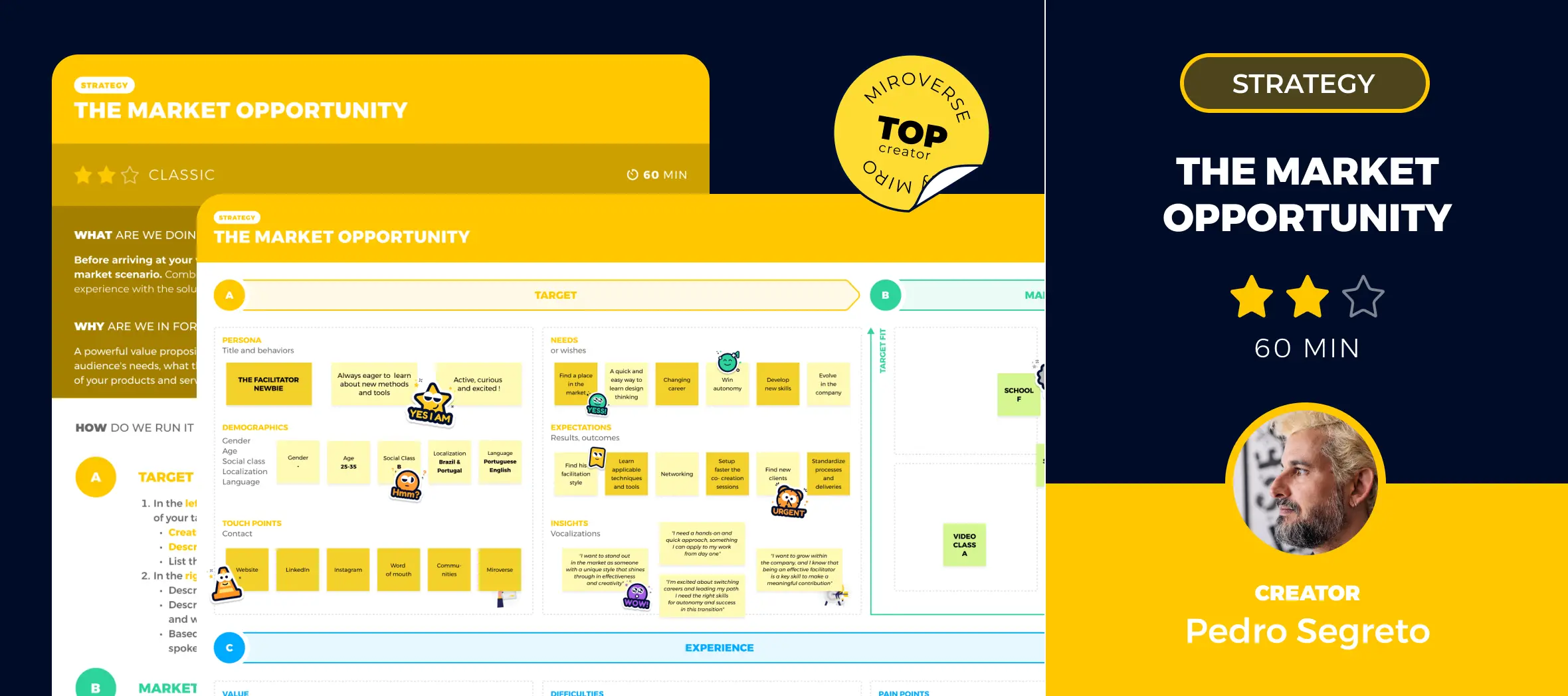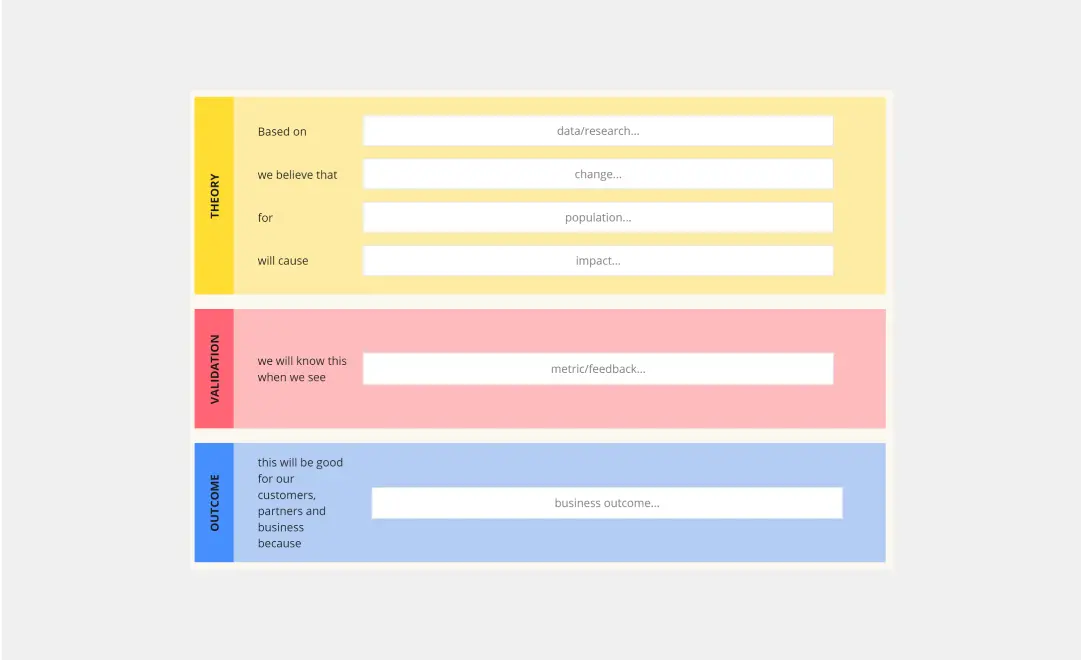Generative AI Opportunity Canvas
About the Generative AI Opportunity Canvas
The Generative AI Opportunity Canvas, designed by Sean Ammirati, provides a structured framework for exploring and defining opportunities using Generative AI for your company, organization, or team.
This canvas offers a comprehensive overview of creative tasks and how Generative AI can be used to enhance their processes. Comprising seven blocks, each segment prompts you to populate it with text boxes, links, pictures, or videos to provide depth and insight. Use this canvas collaboratively with your team to brainstorm and flesh out Generative AI use cases.
When do you use the Generative AI Opportunity Canvas template?
The template is typically used when you're exploring opportunities to leverage Generative AI in various projects or initiatives.
How to use a Generative AI Opportunity Canvas template
The canvas provides seven key elements to demonstrate how you can flush out and explore Generative AI ideas without needing to know the TELeR taxonomy prompt engineering.
The seven key elements are:
1: “Create” Task Emphasis
Which creative tasks, previously done manually, are you exploring to automate?
Identify the creative tasks that were previously done manually and that you aim to improve or automate using Generative AI.
2: Inputs
Can you specify the inputs you plan to provide to guide its creation process?
Specify the inputs required to guide the creation process. Inputs could include data sets, templates, guidelines, strengths, or any other resources necessary for the AI model to generate the desired outputs.
3: High-level goal
Can you define the overarching goal or purpose behind employing Generative AI in this context?
Define the overarching goal or purpose behind employing Generative AI in this task. This could be to increase efficiency, reduce costs, improve quality, or enable creativity in new ways.
4: Outputs
What do you want the output to be?
Determine what you want the output of the Generative AI to be. This could be designs, recommendations, or any other improvements that fulfill the creative tasks identified in previous steps.
5: Illustrative Examples
Can you provide specific historical examples from the past, even those executed manually, that could serve as reference points? (few shot learning)
Can you explain the logic behind this example? (chain of thought)
Provide specific historical examples, even those executed manually, that could serve as reference points. These examples help the AI learn patterns and styles to emulate. Explain the logic behind these examples to help guide the understanding of the task.
6: Task Decomposition
Can you break the create task down into multiple steps? If yes, break down the task into multiple steps below, using the number of steps as necessary.
Should a human review the output at this step?
Break down the creative task into multiple steps, if applicable. Each step should outline a specific action or process required to complete the task. Determine whether human review is necessary at each step to ensure the quality of the output.
7: Additional External or Internal Data
What types of information or data integrations that could significantly improve the output quality and efficiency of the process
Identify any additional information or data integrations that could significantly improve the quality and efficiency of the Generative AI process.
Categories
Similar templates






